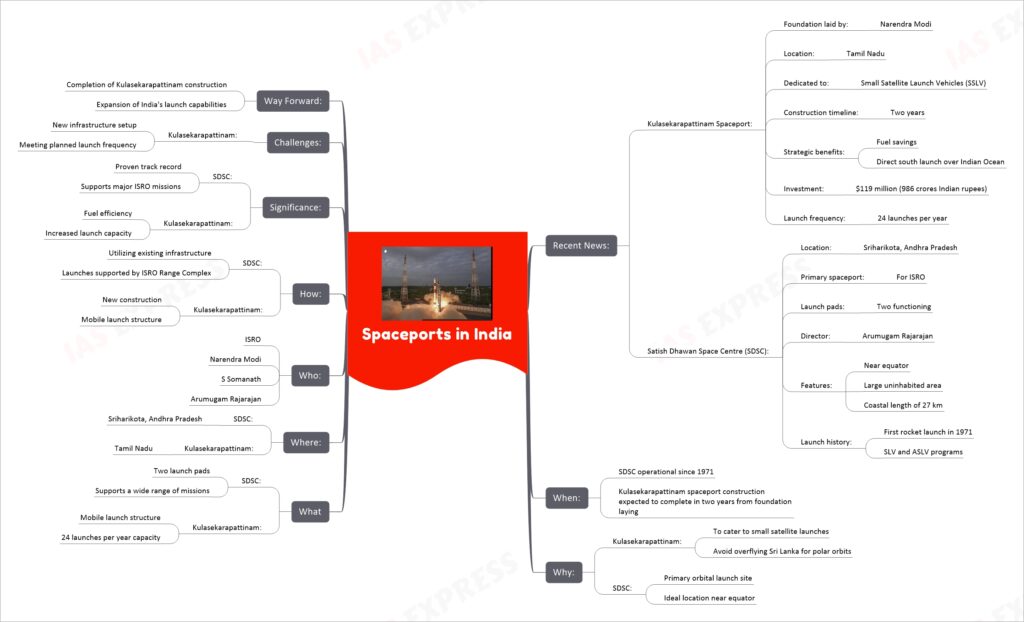Spaceports in India

India is enhancing its space launch capabilities with two major spaceports. The Satish Dhawan Space Centre (SDSC) in Sriharikota, Andhra Pradesh, has been operational since 1971, serving as India’s primary orbital launch site. It benefits from its near-equatorial location, which is ideal for launching satellites into space due to the Earth’s rotational speed boost. The centre has two functioning launch pads and has witnessed significant launches, including India’s lunar exploration probes.
On the other hand, India is constructing a new spaceport in Kulasekarapattinam, Tamil Nadu, dedicated to launching smaller launch vehicles with an investment of $119 million. This spaceport aims to conduct 24 launches per year using a mobile launch structure and is expected to be completed in two years. The new facility will cater to the increasing demand for small satellite launches, offering strategic benefits such as fuel savings and the ability to launch directly south over the Indian Ocean. This expansion reflects India’s growing participation in global space developments and its ambition to become a significant player in the space industry.
If you like this post, please share your feedback in the comments section below so that we will upload more posts like this.

